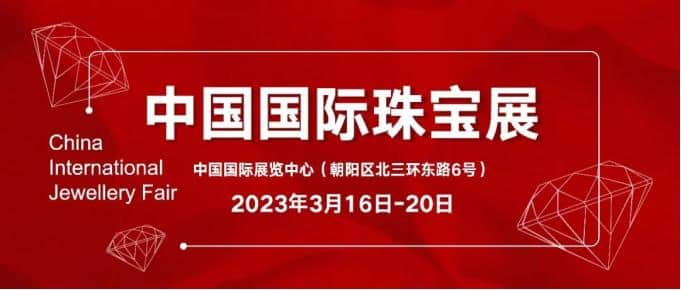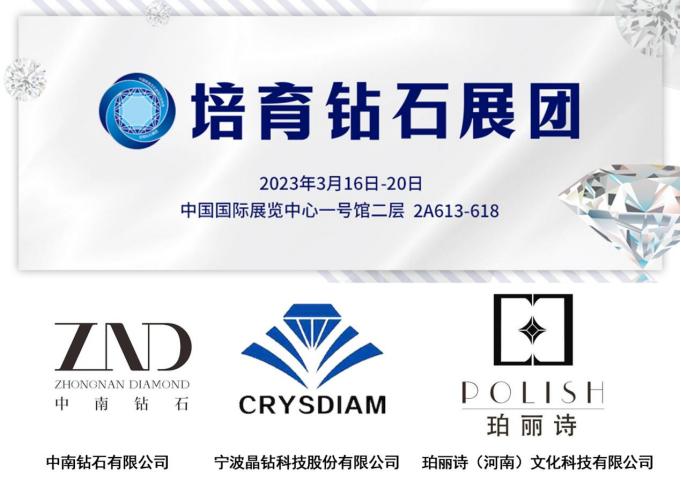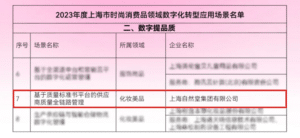The New Trend of Jewelry Consumption, Cultivated Diamonds Become the New Focus of China International Jewelry Show

[ad_1]
The China International Jewelry Show will be officially held at the China Exhibition Center (Old Hall) from March 16-20, 2023. As an annual event in the jewelry industry, many jewelry categories of public concern will be unveiled at the jewelry exhibition.

As the world’s largest producer of lab-grown diamonds, my country’s total output of lab-grown diamonds has continued to lead other countries for decades. In 2022, the global production capacity of cultivated diamonds is about 20 million carats, of which my country’s production capacity of cultivated diamonds is about 9 million carats, accounting for 40-50% of global production. Experts predict that in 2023, the total production capacity of cultivated diamonds in the world will exceed 30 million carats.
In recent years, the production capacity of gem-quality cultivated diamonds in China has continued to maintain a growing trend. After long-term and extensive technological exploration and innovation, my country has now fully mastered the core technology of cultivating high-quality gem-quality diamond single crystals, and can successfully cultivate colorless or different color grades. diamond.
As a product of high technology, the output and quality of gem-quality cultivated diamonds have stabilized. Its environmental protection and high cost performance characteristics have attracted more and more consumers to pay attention to cultivated diamonds, providing more choices for the jewelry market, and gradually Become a new trend of jewelry consumption.

During the China International Jewelery Exhibition, the cultivated diamond exhibition group will organize Zhongnan Diamond Co., Ltd., Ningbo Jingzuan Industrial Technology Co., Ltd., Polishi Jewelry and other key cultivated diamond companies to participate in the exhibition. In addition to loose stones of different colors, there are also themed Custom jewelry. Here you can not only see the advanced technology and excellent craftsmanship of my country’s cultivated diamonds, but also experience the whole chain, personalized and one-stop service from rough stone selection to finished product customization.

According to incomplete statistics on the distribution of global lab-grown diamond brands, China has 19 lab-grown diamond brands, accounting for 10-20% of the global terminal market share, and is the second largest lab-grown diamond consumer market in the world. Lab-grown diamond jewelry is not only used for wedding celebrations, but also for various scenes such as self-pleasure, commemoration, celebration, and decoration. The lab-grown diamond companies participating in this exhibition will bring many exquisite exhibits with rich colors, exquisite cuts and unique designs to the lab-grown diamond exhibition area of China International Jewelry Exhibition.
After several years of preparation and deliberation, the Lab-grown Diamond Pavilion has set sail again. We will meet you at the China International Jewelry Show. You are welcome to visit and purchase the Lab-grown Diamond Pavilion on the second floor of Hall 1 (2A613-618).

China International Jewelery Show
March 16-20, 2023,
Meet with you at China International Exhibition Center (Old Hall), see you soon!
Ps: Cultivated Diamond Tips
1. Basic attributes of cultivated diamonds:
The molecular structure is also composed of carbon atoms in the environment of high temperature and high pressure
Hardness The same as the Mohs hardness of 10 degrees, is the hardest substance
The same refractive index (2.42) and dispersion (0.044)
Appraisal method The certificate and 4C rating are also issued by GIA or IGI
2. Cultivated diamond event development table:
1) 1950s: Lab-grown diamonds are introduced. Lab-grown diamonds at this time were produced using the high-pressure, high-temperature (HPHT) method and were mainly used for industrial purposes, such as in telecommunications and laser optics, and as abrasive materials, among others.
2) 1970s: General Electric researchers create the first gem-quality lab-grown diamond. They are clear enough and large enough to be used as stones in jewelry.
3) Mid-1980s: Manufacturers begin producing gem-quality grown-up diamond crystals on a commercial scale. At first, these lab-grown diamonds were almost all small and yellow or brown in color, but their quality improved over the ensuing decades.
4) 2000s: Diamonds were manufactured using the chemical vapor deposition (CVD) method, which required lower pressures and temperatures compared to the HPHT method.
5) Mid-2010s: The jewelry market can supply colorless lab-grown diamonds on a commercial scale. HPHT and CVD remain the primary production methods for lab-grown diamonds.
[ad_2]
Source link







